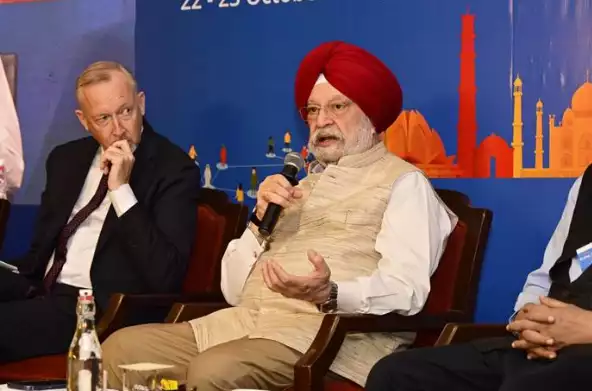India to create roadmap after achieving 20% ethanol blending target, says Hardeep Singh Puri at G-STIC conference

During his speech, Puri outlined India's initiatives in sustainable energy solutions, emphasising the complexities of balancing affordability, availability, and sustainability within democratic frameworks. He also highlighted India's growing role in global energy consumption and various government measures to achieve energy sustainability.
Puri's emphasis to GoI
Puri emphasised the government’s commitment to research and development, highlighting hydrogen fuel cell technology's role in public transport. India currently operates 15 hydrogen-powered buses in the demonstration phase, reflecting a vision for sustainable transport and carbon footprint reduction.
A significant achievement highlighted was the increase in ethanol blending from 1.53% in 2013-14 to 16% today.
“This achievement has prompted the government to advance its blending target of 20% from 2030 to 2025, showcasing a proactive approach to energy sustainability,” Puri stated.
Discussions are already ongoing to create a roadmap for sustainable energy solutions beyond the 20% blending target, indicating proactive long-term planning.
Puri stressed the importance of addressing energy requirements in developing nations, particularly in the Global South, many of which rely heavily on energy imports.
“The success of India’s ethanol initiatives could serve as a model for these regions,” he expressed confidently, adding, “although unlike Brazil, India lacks the luxury of abundant arable land for biofuel production.”
However, he emphasised that innovative biofuel strategies could mitigate import dependency while meeting local energy needs.
What are the challenges?
Puri highlighted the significant challenge democratically elected governments face in balancing energy policy's affordability, availability, and sustainability.
“The critical trilemma that democratically elected governments face globally, in balancing affordability, availability, and sustainability in energy policy,” he pointed out.
He noted that India’s energy consumption is expected to rise significantly—from 5.4 million barrels per day today to 7 million barrels per day by 2030. He underlined that India would significantly contribute to global energy demand, accounting for 25% of the increase over the next two decades.
Affordability is a crucial aspect of the energy transition.
Ujjwala scheme
He also discussed the transformative impact of the Ujjwala scheme, launched in 2016, which significantly increased access to cooking gas. The scheme expanded the number of cylinder connections from 140 million to 330 million, providing clean cooking fuels to economically weaker sections of society.
“This initiative, along with other social schemes of Government, has played a crucial role in lifting approximately 250 million people out of multidimensional poverty under Prime Minister Narendra Modi’s leadership,” he noted.
Green hydrogen as transformative force
Hardeep Singh Puri focused on the potential of green hydrogen as a transformative force in India’s energy landscape. He indicated the importance of local demand, production, and consumption to make green hydrogen a viable energy source.
“The key challenge remains in reducing the cost of production,” he highlighted, calling for ongoing innovation and scaling of technology in this sector.
Through his address, Puri illustrated the complexities and forward-moving strategies in India’s sustainable energy efforts, providing a roadmap not just for India but offering potential models for other nations in the Global South dealing with similar challenges.

